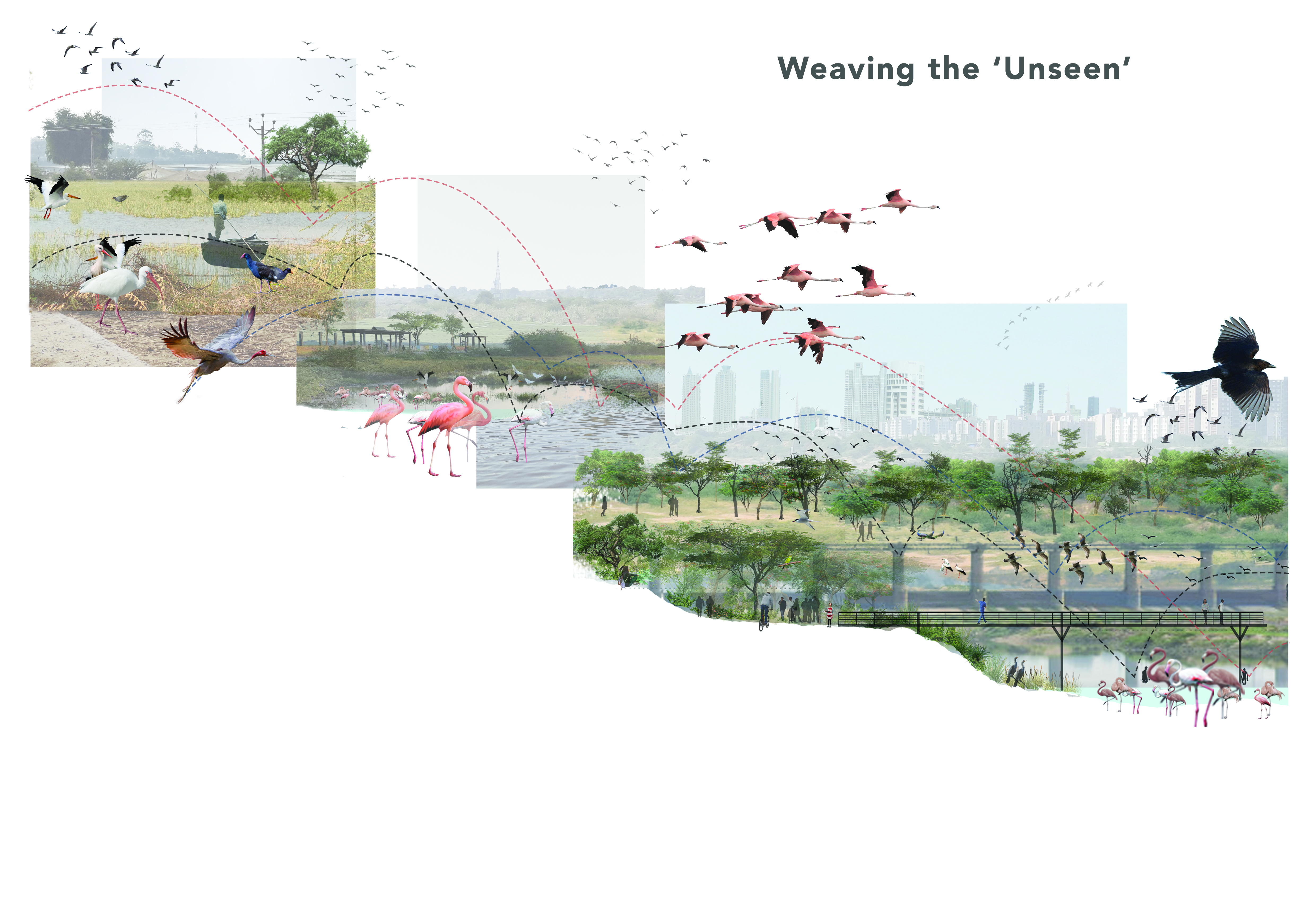
Weaving the 'Unseen' - Integrating urban wildlife habitats
Landscape Design Studio 4- (Site/Sight/Insight)
CEPT University
Wildlife habitats are inherent and invisible components of the urban fabric and the larger landscape of cities. Ahmedabad is a city of nine million people. Located in the semi-arid part of western India, it occupies the alluvial plains of a river (the Sabarmati), which merge into a series of very gently undulating, stabilized sand dunes towards the west. This has resulted in a unique topography-giving rise to numerous lakes in the depressed areas between the dunes. This system gradually dissolves into a large wetland (Nalsarovar) which is a Ramsar site (and part of the central Asian and Indus flyway). This topographical and geological system creates rich and varied habitats and is home to many bird and animals. As the city expands, these ecosystems are getting fragmented and turning into isolated islands, disconnected from the larger landscape.
Wildlife in the urban setting survives, if they can fit their four basic needs (food, water, cover and movement) to the spatial fabric of the urban region and the adjacent context beyond. The project investigates the possibility of an interwoven network of habitats (species sources, stepping stones, urban habitats), which would facilitate movement across the urban region and its adjacencies. It envisions integrating the remnant urban habitats into a system of linked patches that incorporates the ‘unseen’ components of the eco-system. While providing for fauna, these patches would also allow for a richer engagement of people with the natural attributes of a place.
